Today’s article is a guest post by Seth Cane, on the development of the Galil ARM…
The Gail ARM
by Seth Cane
The Galil rifle began life in the late 1960’s. The Six Day War of 1967 made apparent the need for a more rugged, versatile and low-maintenance service rifle to the IDF after experiences with the locally-produced FN FAL proved less than satisfactory. A request was put out for a new service rifle that could survive the arid desert conditions of Israel.
The initial Galil design has been accredited over the years as being a direct-copy of the Finnish Valmet rifle series, but this is not quite accurate. The first Galil prototypes began as simple modifications of captured Soviet AK-47s by Yisrael Galili, which included a number of features later implemented into the final design. Dubbed the Balashnikov, these included a modified fire-selector for use with the shooter’s thumb or fingers while holding the grip; a bipod mounted directly on the gas block; a modified/enlarged handguard to accommodate sustained fire and the bipod when in the folded position, and a folding stock.
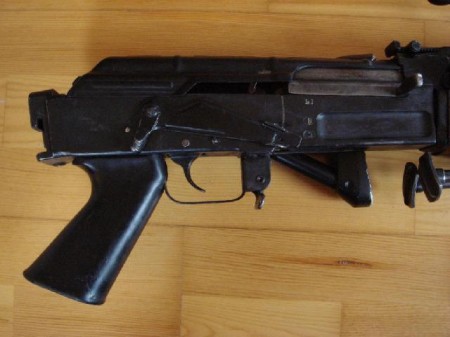
The model pictured above is built on either a Type II or Type III AK-47. Uziel Gal (creator of the Uzi) designed his own prototype service-rifle replacements in 5.56 and 7.62 NATO (seen above the Balashnikov in the photo below).
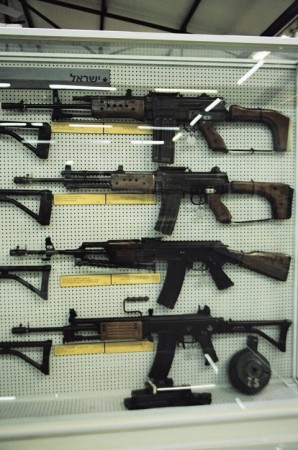
The Balashnikov won out against the American M16 and Stoner, the Russian AK47, and the German HK33. Yisrael Galili’s Balashnikov would eventually be further altered into what became the Galil. The initial production version of the Galil had taken a number design features directly from the Finnish Valmet, most notable being the Gas Block and Rear-Sight assemblies with night-sight provisions. The Galil receiver was also directly copied off the Valmet; popular rumor has been that the first Galil rifles to leave the IMI factory used blank Valmet receivers before production was started in-house, though no evidence has yet come forth to confirm this.
Galil ARMs were first adopted by the IDF in 1972, though few were distributed by the breakout of the Yom-Kippur war of 1973. The Galil ARM (and all other variations) would see most use during the 1982 Lebanon Conflict where it served as the primary service-rifle alongside the Galil SAR. Although having fully-adopted the Galil series, the IDF would continue to issue M16 rifles in support roles due to it’s lighter weight. By the late 1990’s and early 2000’s, the Galil was largely replaced by American M16s and M4 Carbines, though the Galil SAR remains popular amongst armored vehicle crews because of it’s compact size.
Of the three variations initially produced, the ARM(Assault Rifle and Machine-Gun) is arguably the most well-known. The ARM was designed to fulfill all the basic needs IDF infantryman, being capable of sustained accurate fire while also being capable of functioning well in Close-quarters combat situations. Each ARM was equipped with an integrated folding bipod and wire cutter, a carry-handle assembly with integrated bottle-opener, and an enlarged handguard capable of storing the bipod when folded. The model adopted by the IDF used a Teak-wood handguard (versus Polymer/plastic which would presumably overheat and melt faster) with no provision for mounting bayonets. Soldiers issued the ARM would often remove the carry-handle to reduce the overall weight and noise, and also occasionally remove the bipod assembly when on patrols. Later models of the ARM removed the carry-handle entirely, and update the bipod for a quick-detach model for this purpose. While initially intended to use the 50-Round Steel magazines for suppressive fire-roles, the ARM most often used the standard 35-Round Steel magazines as it was never fully-employed as a light-machine gun in Israeli service.

Although the ARM did not find widespread affection from the Israelis, it would become popular with countries like Guatemala and Colombia who purchased large numbers of them alongside AR and SAR models, and South Africa who would purchase and later produce a modified Galil ARM dubbed the R4. Usage of the ARM both as a light-machine gun (with 50-Round magazines) and as a DMR was more common overseas in Latin America and Africa. Estonia would also employ the ARM in various infantry roles alongside the AR and SAR, while Portugal would purchase a small-number of ARMs for usage with their paratroopers.
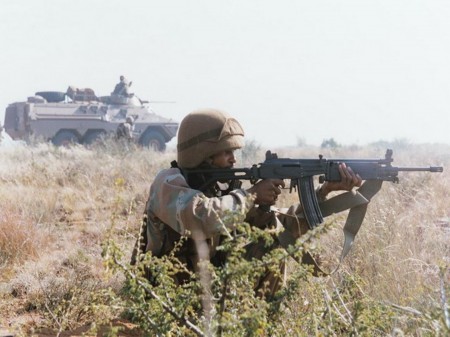

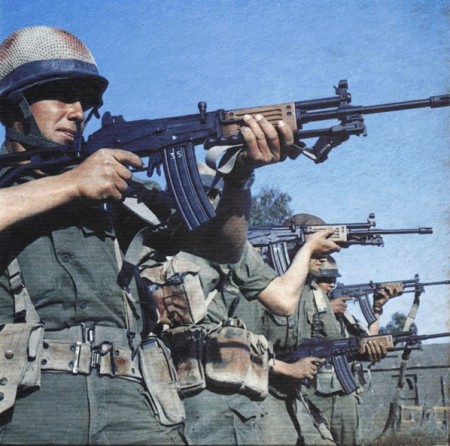
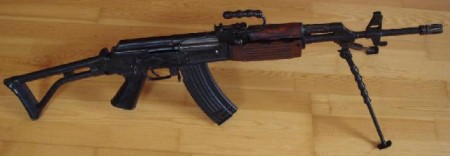
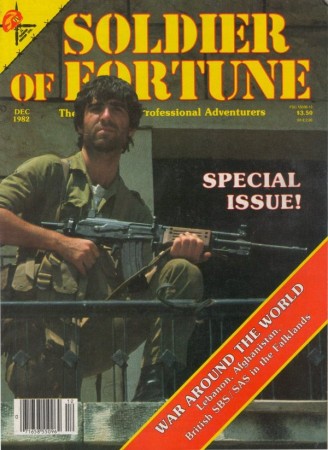
In that last photograph that is most definitely a South African infantryman aiming an R4 rifle. The camo pattern of the uniform and the Ratel IFV in the background give it away clearly.
Also the personal carrier in background, did 2 Tours in Africa
Just wanted to point out, the reason the rifle was initially called the Balashnikov is that Yisrael Galili’s name was originally Yisrael Balashnikov. As is fairly common for immigrants to Israel who have non-Jewish names, Balashnikov changed his name and thus the rifle’s name changed as well.
Correct, and to expand on that I’ll add that when Israel became at state in 1948 the new Prime Minister, David Ben-Gurion, issued an order that all officers in the new IDF that had ethnic non Hebrew names needed to change them to “Israeli” names. My father, a young officer at the time, was originally named Bloomberg(mountain flower in German) and he changed it to Har-dof which means the same in Hebrew.
Last pic says ”Portuguese soldier with Galil ARM” – it’s not a Portuguese soldier but rather a SADF soldier with R4
Fixed it – thanks.
But nitpicking but in the last pic the rifle is not a Galil ARM but a Vektor R4. The rifles are almost exactly the same except that the R4 has a longer stock and it has some better furniture, especially on the more modern R5 and R6 carbines.
The South African soldier is not aiming a Galil ARM rifle. Instead, he is wielding a Denel (now Vektor) R4 assault rifle, a south african derivative made under license from Israel.